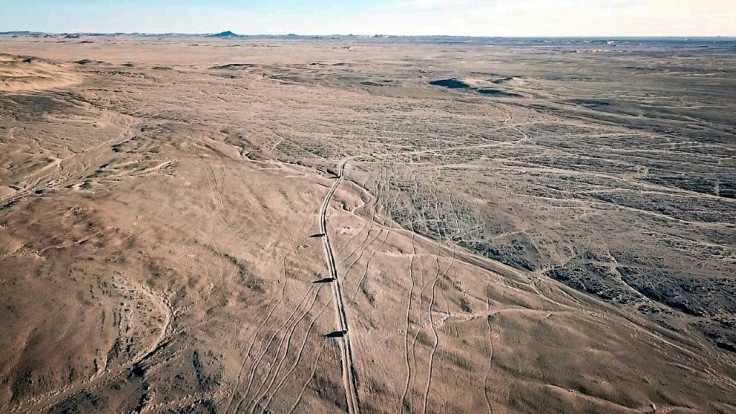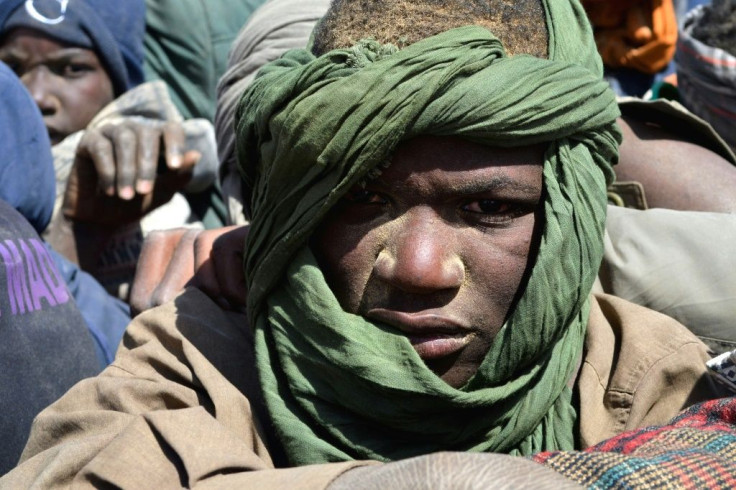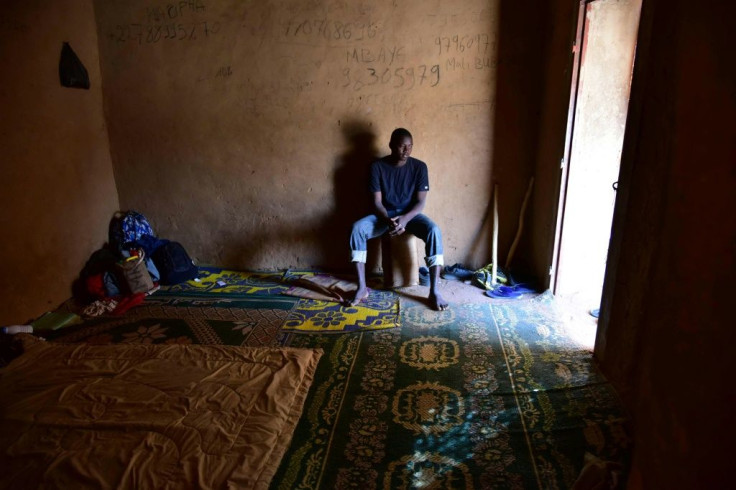Niger Migrant Hub Goes From Boom To Bust As New Measures Bite

Demand for plastic jerry cans has nosedived in the Niger town of Agadez, and Issa Abdou is unhappy.
"The market is dead," he said. "There are no more migrants passing through."
Once a fabled stop on medieval trading routes across the Sahara, Agadez blossomed half a dozen years ago into a modern-day hub for caravans of a different type -- convoys of Africans desperate to reach Europe.
Their demand bred a huge industry, from smugglers and drivers to accommodation, food and blankets -- and Abdou's jerry cans, essential for water and fuel.
The lucrative business continued despite measures in 2015 that made migrant trafficking a crime punishable by 30 years in prison.
But activity has slumped since the start of the year.
Under an EU-backed plan, patrols have been beefed up across the desert to dissuade migrants, and smugglers are being offered financial incentives to give up their trade. Today, the estimated number of migrants passing through Niger has fallen from 100,000-150,000 a year pre-2016 to 5,000-10,000.
On a visit to Niamey in February, Italian Prime Minister Giuseppe Conte said the tally of illegal migrants turning up on his country's shores had dropped by 80 percent.
In Agadez, the courtyards of buildings where migrants used to hole up awaiting their departure have emptied out.
The strategy may have helped dam the flow of illegal migration to Europe, but its impact on the local economy has been severe.

Migrants are hardly known for their wealth. Even so, an individual can expect to shell out 200,000-250,000 CFA francs ($335-$420, 300-380 euros) to pay for a week's housing and food and the transport to Libya, said Bachir Amma, who heads an association of former migrant smugglers.
"It's disastrous here in Agadez. From the sellers of jerry cans to small restaurants, from the middle men to the smugglers... the whole migratory chain is broken and people have nothing," said Nigerian journalist Ibrahim Manzo Diallo.
"Everyone is afraid. If you're caught with a migrant, you're screwed," said Idrissa Salifou, a former smuggler. "You're sent straight to (the capital) Niamey."

"We're totally busted," he said. "At one time, I could personally oversee the departure of 13 small vehicles, each carrying from 10 to 31 people, and I'd pick up more than three million CFA francs."
In those halcyon times, every Monday a convoy of between 300 and 400 smaller vehicles and 70 to 115 large trucks would roll out of Agadez.
Its destination was Libya's Mediterranean coast, where rubber dinghies and flimsy vessels awaited for the perilous crossing to Europe.
These weekly convoys carried "as many as 12,000 people", Salifou said.
As for small businesses, Abdou recalled selling as many as 100 jerry cans a day, charging 4,000 CFA francs apiece.
Grim-faced under a blue turban, fellow trader Mohamed Moussa also sells items for the migrants' survival kit. "In two months I've sold fewer than a dozen blankets and mats," he complained.
The days of buses packed with migrants rolling in from Niamey are just a memory, as are the queues of people outside banks, waiting to pick up money wired by their families.
According to a security source, "reckless migrants" are taking "new, more dangerous routes" to enter Libya, even though the North African country has gained a hellish reputation since Moamer Kadhafi fell in 2011.
The International Organization for Migration (OIM) reports that it has helped more than 40,000 migrants to return to their homelands voluntarily since Niger's 2015 law.
The carrot-and-stick approach under the new plan includes an offer of 1.5 million CFA francs to help "former suppliers" convert to other income sources.
In Abdou's case, that might be farming, while Salifou is considering going into the restaurant sector.
"But so far only 521 of a total 6,565 people have received" the aid, said Amma.
Salifou urged the government in Niamey and the EU "to honour their commitment".
Otherwise, he warned, "patience has its limits".
© Copyright AFP 2024. All rights reserved.





















